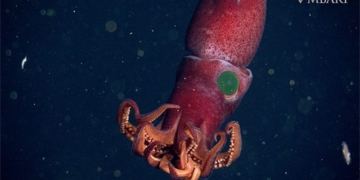 When we think of sharks, we often envision these fierce ocean predators with jagged teeth ready to devour any prey, including humans. As a result, they have a notorious reputation; however, there is a species with an appearance that is quite unappealing but is actually very gentle.
When we think of sharks, we often envision these fierce ocean predators with jagged teeth ready to devour any prey, including humans. As a result, they have a notorious reputation; however, there is a species with an appearance that is quite unappealing but is actually very gentle.
The Orectolobus ornatus, also known as the Ornate Wobbegong, is a slow-moving shark that inhabits the ocean floor. They rely on camouflage to avoid larger fish and also use this tactic to ambush their prey. Perhaps this is one of the most “patient” creatures: during the day, the Orectolobus ornatus typically remains still among corals and seaweed, waiting for unsuspecting prey. Due to their skin color and “vegetative” shape, sometimes divers find it quite challenging to spot the Orectolobus ornatus lying flat against the ocean floor.
They consume nearly any prey within their striking range, and as night falls, they become more agile, gliding gently over the seabed like ghosts, swallowing various flatfish (such as flounder), octopuses, and burrowing mollusks.
This species has a set of teeth that, while not particularly impressive compared to typical sharks, is nonetheless quite formidable: they possess many small, sharp, and pointed teeth that can deliver a strong bite.
Typically, this shark is harmless to humans, but that is merely theoretical; in reality, they have bitten individuals who ventured too close or accidentally stepped on them. Interestingly, this species gives live birth (as opposed to laying eggs like many other fish), and scientists know very little about their reproductive habits.

The Orectolobus ornatus is an ugly shark: it has a flattened body and “root-like” flesh protruding outward, creating a unique and peculiar shape. The tentacle-like structures resembling roots make them look like tattered rags.
This shark species resides on the ocean floor of the western Pacific and the waters of Australia. Adult males can grow to approximately 3 meters in length.


















































